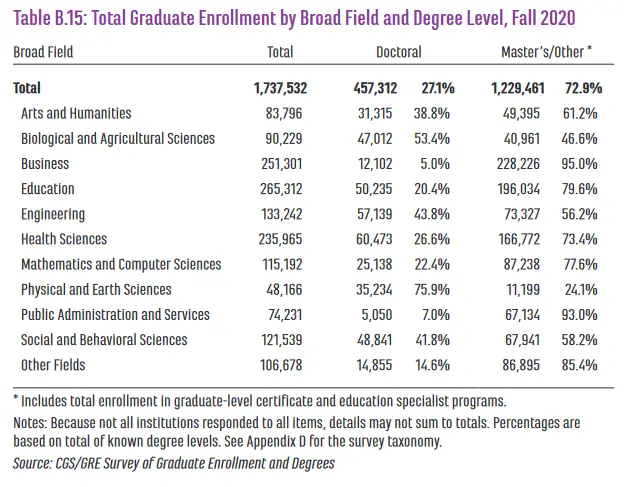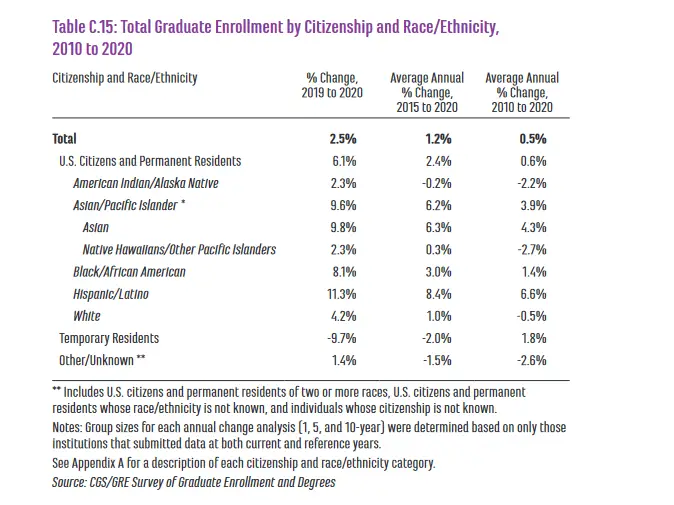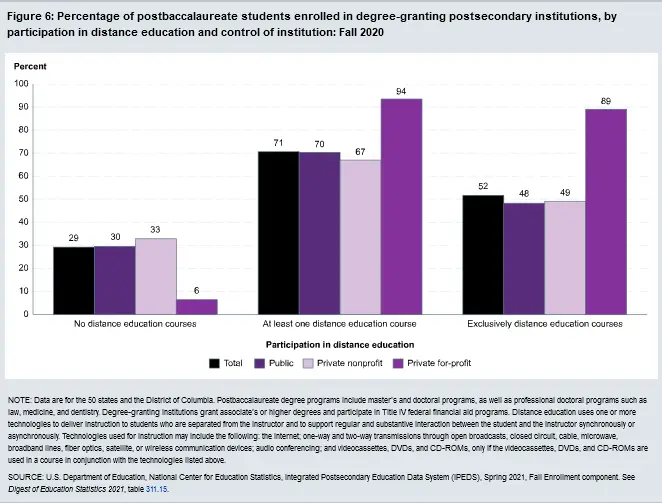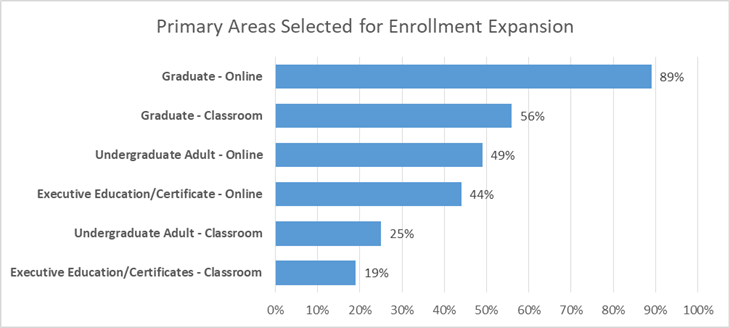Part
01
of one
Part
01
What is the impact of increasing graduate enrollments?
Key Takeaways
- Data from the most recent survey of graduate enrollment and degrees by the Council of Graduate Schools (CGS) indicate that for the fall 2020 semester, both graduate applications and first-time graduate enrollment increased by 7.3% and 1.8%, respectively.
- Additionally, out of the 1,737,532 graduate students that were enrolled in Fall 2020, 72.9% of them were enrolled in master’s programs while 27.1% got enrolled in doctoral programs.
- To cater to the increase in graduate enrollment numbers, especially online enrollment, many players in the education field, ranging from local and national universities to emerging online education giants, are now fighting for a share in the online education market. As a result, increased competition among online graduate providers is now one of the factors reshaping the online education space.
Introduction
While undergraduate enrollment decreased amid the pandemic, the number of graduate applications increased by 1.8%. According to Dr. Janet C. Rutledge, vice provost and dean of the Graduate School at the University of Maryland, the pandemic made people think about what they wanted to do with their lives leading to a lot of last-minute decisions about going back to school, and this could be one of the reasons for the increase. This report provides insights into how graduate enrollment has changed over time.
It should be noted that statistics on how graduate enrollment has changed over the years are scarce in the public domain. Therefore, we heavily relied on a report by the Council of Graduate Schools (CGS) to provide the overview below.
Graduate Enrollment Statistics
- Data from the most recent survey of graduate enrollment and degrees by the Council of Graduate Schools (CGS) indicate that for the fall 2020 semester, both graduate applications and first-time graduate enrollment increased by 7.3% and 1.8%, respectively.
- According to CGS, this rise in graduate applications appears to have been driven by Doctoral Universities with Very High Research Activities, or R1 institutions as they saw an 8.1% increase in the number of applications.
- The report also found that applications to Doctoral or Professional Universities (D/PU), Doctoral Universities with High Research Activities (R2), and Master’s Colleges and Universities went up by 5.6%, 4.5%, and 2.8%, respectively.
- Additionally, out of the 1,737,532 graduate students that were enrolled in fall 2020, 72.9% of them were enrolled in master’s programs while 27.1% got enrolled in doctoral programs.
- Although the number of total graduate enrollments between fall 2019 and fall 2020 increased by 2.5%, it has been slowly increasing over the years. Between fall 2010 and fall 2020, total graduate enrollment increased by 0.5% while between fall 2015 and fall 2020, the number went up by 1.2%.
- CGS believes that an increase in the number of domestic students is the reason behind the growth in fall 2020. Even though the number of international students decreased by 9.7% largely because of COVID-19 restrictions, that of domestic students went up by 6.1%.
- Hispanic/Latino, Asian, Asian/Pacific Islander, and Black/African American students were the top drivers behind the growth in domestic student enrollment in fall 2020 as their numbers went up by 11.3%, 9.8%, 9.6%, and 8.1%, respectively.
- Moreover, according to CGS data, the number of student enrollments from these races has been gradually increasing over the years. The number of domestic students enrolled from Hispanic/Latino, Asian, Asian/Pacific Islander, and Black/African American races increased by 6.6%, 4.3%, 3.9%, and 1.4%, respectively between fall 2010 and fall 2020, and 8.4%, 6.3%, 6.2%, and 3.0%, respectively between fall 2015 and fall 2020.
- When it comes to graduate enrollment by the field of study, business, health sciences, biological & agricultural sciences, and public administration & services saw increases in total enrollment between 2019 and 2020 by 8.1%, 5.0%, 4.8%, and 4.1%, respectively.
- On the other hand, while mathematics and computer sciences did not see much growth in graduate enrollment between 2019 and 2020, the growth in this field has been the highest over the past 10 years. Between fall 2010 and fall 2020, graduate enrollment in the field of mathematics and computer sciences increased by 8.6%, followed by health sciences at 5.2% and business at 2.2%.
Distance Education as One of the Drivers Behind Increasing Graduate Enrollment Numbers
- According to Ruffalo Noel Levitz (RNL), one of the leading providers of higher education enrollment management, online graduate enrollment grew by 93% in 2020. RNL surveyed 1,500 prospective graduate students who were planning to enroll in 2022 and based on the data collected, a vast majority of graduate students now enroll in hybrid (30%) and online programs (30%). Additionally, roughly 50% of those who are enrolling in online and hybrid programs are pursuing a master's degree followed by 30% who are pursuing non-degree credentials and 15% doing doctoral degrees.
- The National Center for Education Statistics (NCES) also found that in fall 2020, approximately 71% (an increase from 42% in 2019) of all post-baccalaureate students took at least one distance education course while 52% (an increase from 33% in 2019) of them enrolled in distance education courses exclusively.
- While the COVID-19 pandemic accelerated this shift to distance education courses, the number of online learners has been gradually increasing over the years. For instance, the number of learners who have enrolled in massive open online courses (MOOCs) over the years increased from 300,000 to 220 million between 2011 and 2021, and according to McKinsey, this increase in demand is undeniable.
An Increase in More Flexible/Online Programs
- To cater to the increase in graduate enrollment numbers, especially online enrollment, many players in the education field, ranging from local and national universities to emerging online education giants, are now fighting for a share in the online education market. As a result, increased competition among online graduate providers is now one of the factors reshaping the online education space.
- A 2021 RNL survey also revealed that approximately 89% of schools are planning to grow their online graduate enrollment as a way to “make up for real and anticipated losses to traditional undergraduate enrollment.”
Research Strategy
For this research on the impact of increasing graduate enrollments, we leveraged the most reputable sources of information that were available in the public domain, including McKinsey, the National Center for Education Statistics (NCES), and Ruffalo Noel Levitz (RNL) among others.
Please note that data on how graduate enrollment has changed over the years was scarce in the public domain. Thus, we heavily relied on a report by the Council of Graduate Schools (CGS) to provide the overview. The CGS/GRE Survey of Graduate Enrollment and Degrees is a "leading source of information on master’s and doctoral program applications, enrollment, and degrees conferred in the United States."






